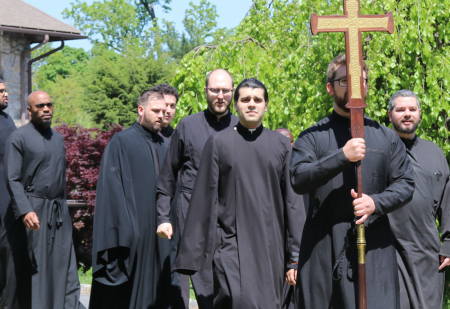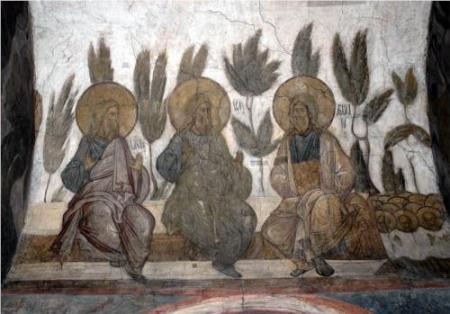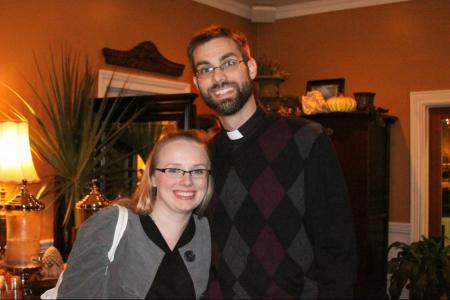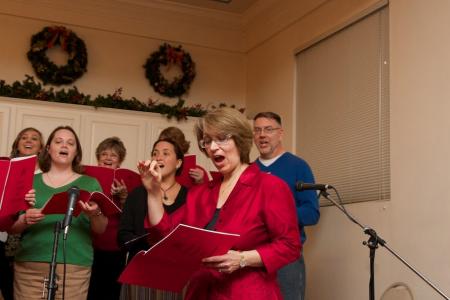The “Our Father”

When Jesus’ taught His disciples how to pray, He gave them the “Our Father” (Matthew 6:9-13; Luke 11:1-4). They were not to mindlessly recite it, saying it with their lips only (Matthew 15:8; Mark 7:6) but rather that the words would be said with the heart and mind and become a vehicle for communion with the Father. This prayer to the Father becomes our own as the Holy Spirit bears witness in our hearts that we are God’s children, crying, “Abba” or “Daddy” (Galatians 4:6), a heartfelt expression of our love for God and devotion to Him. One of the most crucial ways of loving and obeying the Lord (Deuteronomy 6:1-5; Matthew 22:36-38; Mark 12:28-30; Luke 10:25-28) with all of our heart, mind and strength is to pray with attentiveness, i.e. to pray with all of our heart, soul, mind and strength. And there are no better words to use than those taught to us by the Son of God Himself.
The prayer begins with “Our Father Who is in Heaven,” telling us immediately whom we are addressing and who we are in relation to Him. Through faith in Christ and the receipt of the Holy Spirit in Baptism and Chrismation, we become, by grace (adoption), the children of God and co-heirs with Jesus Christ our Lord (Romans 8:17; Galatians 4:4-7). God has truly become our Father (John 1:12-13), our Abba. The One Who Is, and Who made all things has given us the right to call Him not only Father, but Daddy. And if God is our Father then we are all (as many of us who have been baptized into Christ) brothers and sisters. We are all part of God’s household and are all equally co-heirs with Christ.
We say, “hallowed be Your Name,” in other words, “Your Name is holy, may it be praised, and may it be kept as holy.” It is a reminder that God is holy and that we ought to give Him the praise that He is due. Throughout the Scriptures we see that the Name of God, the Presence of God and the Person of God are inseparable. To call on the Name is to invoke the presence of the person who is named. This is why taking the Lord’s Name in vain is a gravely serious sin that we need to repent of and confess.
We pray for the Kingdom (literally the reign or rule) of God to come fully on the earth so that God’s will will be done perfectly in our lives and in all the earth. The Kingdom of God was announced and inaugurated by Christ in His first coming, but we wait and pray for the fullness of that reign that will come only when Jesus returns. Next we pray for the “epiousion” (usually translated “daily”) bread or super substantial bread, or bread “of tomorrow.” In other words we pray for the sustenance needed for true life, the bread, which is the foretaste of the heavenly banquet, Holy Communion.
We pray that the Father will forgive us as we forgive others. Jesus tells us clearly that if we fail to forgive others that our sins will not be forgiven (Matthew 6:14; 7:1-2; 18:21-35). We pray not to be led into temptation but that we be delivered from the Evil One. In Mark 14:38 Jesus warns Peter to “watch and pray” so that he will not fall into temptation. Likewise we are to be diligent and to pray that we might not be tempted; and that we be rescued from the Evil One.
This is the prayer that the Lord Himself gave us. Let us pray it daily, several times a day. And whenever and wherever we pray it, let it be with attentiveness and understanding. In other words, let us pray it with all our heart, mind, soul and strength.
-
Originally from Trinidad and Tobago, Fr. Maximus Cabey (SVOTS ’11) was raised Roman Catholic. Always sensing a call to be a pastor and teacher, he has been involved in pastoral ministry in one form or another for the past 23 years. Fr. Maximus and his wife, Photini, live in Green Bay, Wisconsin, where Fr. Maximus serves as the priest at St. Matthew Orthodox Church.
This article was originally published January 3, 2012.









